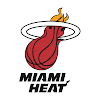There are many products in use today that go unnoticed as we work through our busy days. How often is plush carpeting or even the fork ignored for the major part they play in or daily lives. In most instances, the companies that manufacture and innovate in these areas are also ignored. With its inception in 1901, the Universal Stamping Machine Company was one such company.
A simple stamping machine
The simple "stamping device" was the first of over 3,500 patents awarded to the company through its ongoing history. This devise was created to move mail through a company's mail room more efficiently. This saved the company time and money in an era when business was booming and the industrial age was flourishing in the US. Three years later, the US Government authorized permit mail, followed four years later by the incorporation of the Universal Stamping Machine Company. That same year, the company started selling cancellation machines to the US Post Office.
Pitney and Bowes
In 1919, Mr. Pitney and Mr. Bowes got together and started talking about a merger. In 1920, the merger took place followed by a newer smaller machine at a lesser cost. With the advent of mass mailings and its lower costs the company's primary product sold well through the depression.
Monarch Marking System Company
Perhaps a forerunner to today's printing and computer generated printing was the acquisition of the Monarch Marking System Company in 1968. Eventually, this company would go on to develop the bar code with all the ramifications, and new printing options, it brings today. The company once again was at the cutting edge of patent and design.
Moving toward today
Pitney Bowes moved a step closer to today's "modern" age as it introduced its computer, printer and fax lines to the market in 1986. It also began a services division that could aide customers with their Pitney Bowes postage meter, printer, copier and faxing issues.
In was in 1996 that the company made its move into the "modern mail service realm. Its Personal Post Office was well accepted by small and mid-sized companies working with increased amounts of post related projects. For the most part, the major "over-night" carriers had now become well established and the company was there and ready to serve. The use of bar codes and the company's familiarity with them also helped push the company's revenues higher.
It has essentially been able to transfer older technology into the computer/printer age of today. To magnify this accomplishment, all one would need to do is look at revenue from the late 1970's to 2005 when the company increased revenues from its first billion to 5 billion. Since that time the company has been quick to identify trends and move with them.
Source: http://ezinearticles.com
Subscribe to:
Post Comments (Atom)















































0 comments:
Post a Comment